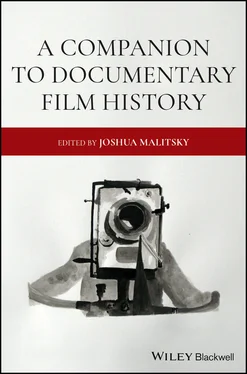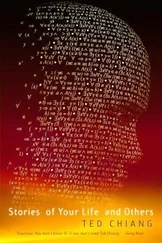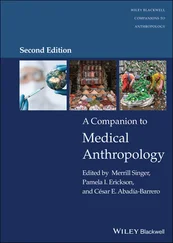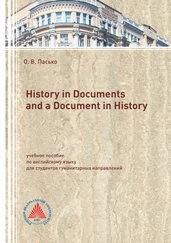Limit of Liability/Disclaimer of Warranty While the publisher and authors have used their best efforts in preparing this work, they make no representations or warranties with respect to the accuracy or completeness of the contents of this work and specifically disclaim all warranties, including without limitation any implied warranties of merchantability or fitness for a particular purpose. No warranty may be created or extended by sales representatives, written sales materials or promotional statements for this work. The fact that an organization, website, or product is referred to in this work as a citation and/or potential source of further information does not mean that the publisher and authors endorse the information or services the organization, website, or product may provide or recommendations it may make. This work is sold with the understanding that the publisher is not engaged in rendering professional services. The advice and strategies contained herein may not be suitable for your situation. You should consult with a specialist where appropriate. Further, readers should be aware that websites listed in this work may have changed or disappeared between when this work was written and when it is read. Neither the publisher nor authors shall be liable for any loss of profit or any other commercial damages, including but not limited to special, incidental, consequential, or other damages.
Library of Congress Cataloging‐in‐Publication Data
Names: Malitsky, Joshua, editor of compilation.
Title: A companion to documentary film history / [edited by] Joshua Malitsky.
Description: First edition. | Hoboken : Wiley‐Blackwell [2020] | Includes bibliographical references and index.
Identifiers: LCCN 2020025445 (print) | LCCN 2020025446 (ebook) | ISBN 9781119116240 (cloth) | ISBN 9781119116295 (adobe pdf) | ISBN 9781119116301 (epub)
Subjects: LCSH: Documentary films–History and criticism.
Classification: LCC PN1995.9.D6 M3285 2020 (print) | LCC PN1995.9.D6 (ebook) | DDC 070.1/8–dc23
LC record available at https://lccn.loc.gov/2020025445LC ebook record available at https://lccn.loc.gov/2020025446
Cover Design: Wiley
Cover Image: © image by Rainer Ganahl, ganahl.info (artist’s website), Kai Matsuyima Gallery, NYC
Weihong Bao University of CaliforniaUSA
Luca Caminati Concordia UniversityCanada
James Leo Cahill University of TorontoCanada
Zoë Druick Simon Fraser UniversityCanada
Paul Fileri American UniversityUSA
Alla Gadassik Emily Carr University of Art + DesignCanada
Jane M. Gaines Columbia UniversityUSA
Oliver Gaycken University of MarylandUSA
Malte Hagener Philipps University MarburgGermany
Alice Lovejoy University of MinnesotaUSA
Steven Jacobs Ghent UniversityBelgium
Brian R. Jacobson California Institute of TechnologyUSA
Martin L. Johnson University of North CarolinaUSA
Joshua Malitsky Indiana UniversityUSA
Mariano Mestman Universidad de Buenos AiresArgentina
Joshua Neves Concordia UniversityCanada
Philip Rosen Brown UniversityUSA
Raisa Sidenova Newcastle UniversityUK
William Uricchio Massachusetts Institute of TechnologyUSA
Gregory A. Waller Indiana UniversityUSA
Thomas Waugh Concordia UniversityCanada
Brian Winston Lincoln UniversityUK
Naoki Yamamoto University of CaliforniaUSA
Yvonne Zimmermann Philipps University MarburgGermany
Introduction: Expanding Documentary Histories
Joshua Malitsky
Indiana University
Documentary Film and the Documentary Tradition
Documentary media has a more prominent role in the contemporary global zeitgeist than it ever has before. Documentaries are produced by massive government agencies, by leading broadcast corporations, by independent collectives, by individuals, and by a host of formations in between. They are viewed in theaters, on broadcast and cable or satellite television, in public spaces, at workplaces, in schools, in galleries and museums, in planes, trains, and automobiles, and in homes. We access them on screens small and large, projected in theaters, on walls, and on personal devices, be they phones or personal computers. We watch them in one sitting or over the course of days, weeks, or months. A way of speaking about the world with images and (often) sounds connected to the world, they have become increasingly integral to how we experience our personal and professional lives. And whereas they serve a host of different functions, they have become perhaps the most significant form through which we think in depth about the past.
Scholarship on documentary and nonfiction film has grown substantially in the last 30 years and exploded in the last 10. A handful of excellent volumes on the current state of documentary studies have either recently been published or are forthcoming. Some serve as introductory textbooks, such as Louise Spence’s and Vinicius Navarro’s Crafting Truth (Spence and Navarro, 2010). Some have sought to encapsulate the “present agenda of concerns” in documentary studies such as Brian Winston’s The Documentary Film Book (Winston, 2013) or the volume that Patrick Sjoberg and I produced entitled The Documentary Moment (Malitsky and Sjoberg, 2021). Others focus on debates and statements that have taken place over the history of documentary, such as Jonathan Kahana’s The Documentary Film Reader (Kahana, 2016). Alexandra Juhasz’s and Alisa Lebow’s A Companion to Contemporary Documentary Film (Juhasz and Lebow, 2015), with which this book is affiliated, is an authoritative as well as an activist study of “documentary’s world‐changing aspirations,” participating in the project to which it sees documentaries, scholars, and artists deeply dedicated—“the passionate commitment to and direct engagement with the lived world” (Juhasz and Lebow, 2015: 1).
This relationship between documentary media and the past is the subject of A Companion to Documentary Film History . In this book, a cluster of major scholars address the textual, industrial, and social aspects of this media form. Among the many recent works, A Companion to Documentary Film History is the only anthology that focuses its attention on the history of the documentary. Its goal in this capacity is both to shed light on central historical issues, be they related to reception, geography, authorship, multimedia context, or movements, and to do so by highlighting a breadth of historiographical approaches. Crucially, it achieves this by radically expanding the purview of what counts as documentary.
Recent years have witnessed growth in scholarship on nonfiction film practices that are seen by many to be peripheral to documentary. Travelogues, newsreels, industrial films, educational films, home movies, film diaries, science films, and promotional films were “considered too quotidian, too topical, too instrumental or too ephemeral to have a place in the documentary tradition” (Kahana, 2016: 3). Their aesthetics were too inconsequential, their voices too muted, their purposes too obvious. The new scholarship on this work, however, has transformed the field of documentary history by expanding the (cinematic) objects of consideration—and it has done so methodologically as well with its focus on materialist and archival histories. Challenging dominant auteurist and national cinema paradigms, such work highlights the conditions of film production and the context of its use, including the reasons for commission, the understanding of intended audience, the proposed purposes, and so forth. Doing so does not only make the subfield of documentary richer and more generative—though certainly it does that—but it is also historically necessary .
Читать дальше












